#acariformes
Text


i keep finding rainbowia on the side of the road
#arachnida#acariformes#trombidiformes#erythraeidae#rainbowia#anyone who says 'eww is that a tick' i'm emailing you an envelope full of erythraeids
48 notes
·
View notes
Text

Bdellidae (Snout Mite)
#nature#animals#photography#arthropods#bugblr#science#invertebrates#macro photography#arachnida#acariformes#acari#mites#bdellidae#snout mites
1 note
·
View note
Note
Harvestmen-
They are often called daddylonglegs and people think they are spiders-
But they are not.
They are just silly goofy little guys with the silliest eye placement known to man
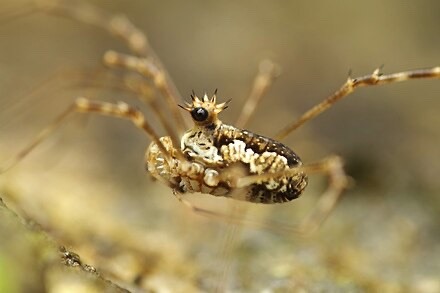
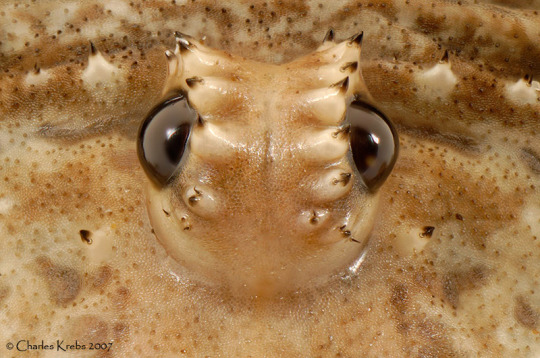
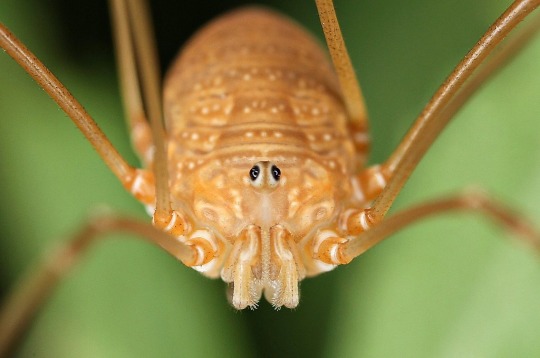
They use their second pair of legs as long feelers to feel where they’re going
They are also non-venomous unlike spiders
Super silly.
What if they were musicmanified
🥜 little peanut head looking freak/aff
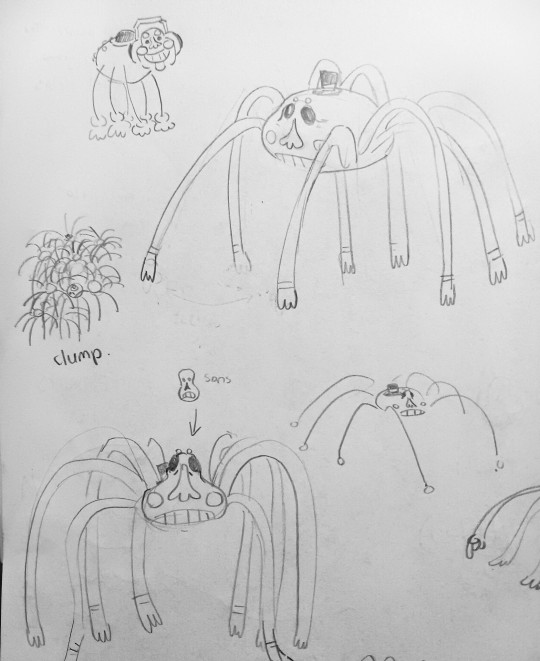
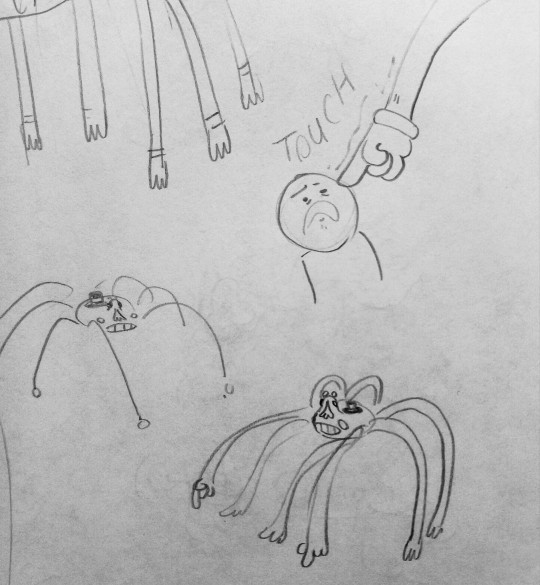
i know this isnt super accurate to harvestman anatomy but i was mainly going for the fact that even though spiders at the very least have the seperation of their heads and abdomens, harvestmen... do not, and literally look like cartoon spiders.
But, I have to thank you a LOT today because this reminded me that I had never finished the arachnid MM concept! And the next one on the block WAS Opiliones, their order.
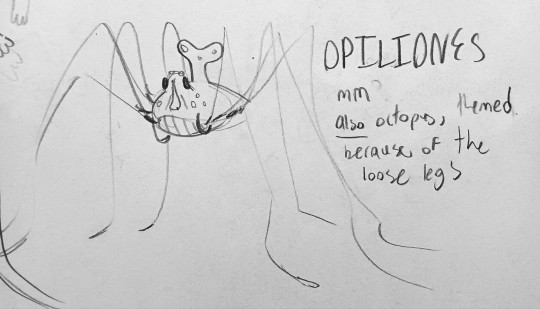
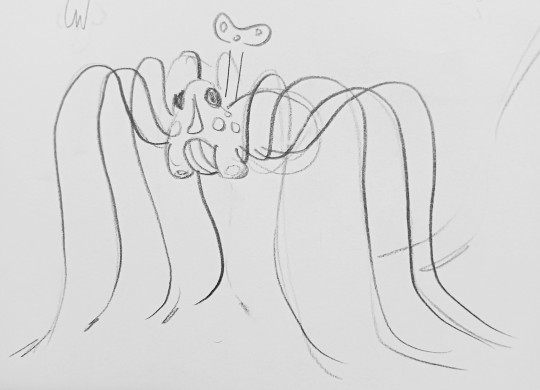
I made them resemble an octopus on account of their rope-y, flexible legs. Their role in the robo cafe?... I'm not sure. But they're there. They could automate care for an aquatic exhibit on account of being able to walk on water, maybe? And speaking of helpers: Palpigradi!

They're described as micro-whipscorpions, but they're actually the sister group to Solifugae! They suck up cleaning detergents with their tail and spit it out through their "pedipalps" to use it to scrub with their boots. They don't have eyes and can't see, but they aware of the floorplan of the bartending area, and Camel Spider guy can tell them where to go. They can also sense vibrations with the bristles on their tail.

Parasitiformes Music Man - A tick!
And. knowing how much of a pest ticks are... Man, I wish i hadn't gone so hard with his design!! He really does look like an old cartoony vampire guy. I don't even know what role he'd play in the cafe but I've gotta figure something out. I think he's one of the best ones I've made.

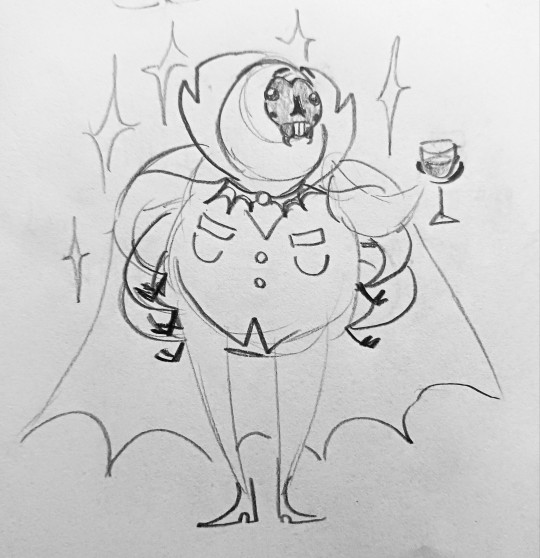
But I do know the role for the Acariformes music man - the ghoul. She works alongside Scorpi MM in security, called in as backup. She's mainly here for hustling people out AFTER they've been confirmed to need to be forcibly removed, since she can't see and it's hard for her to read the situation. Thematically/theatrically, though, she'd work right alongside Parasitiformes MM as a halloween duo.
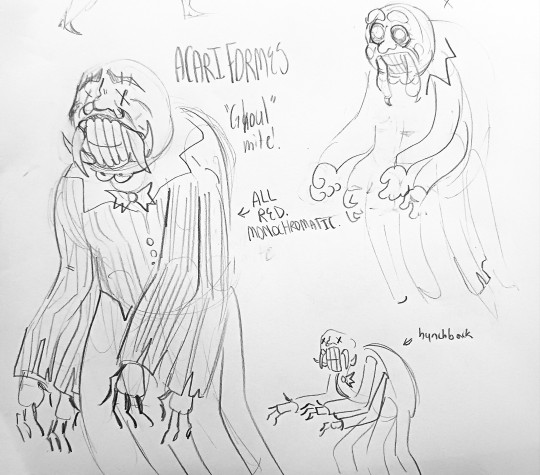
Also, she's particularly jarring to me because I know her color pallette: all red. to the teeth, to the clothes, to the skin. Red. She juts out like a sore thumb but I really love it.
And with the addition of these guys, I officially have 102 djmm/mms in my roster! Yipee
Also also, um. I'm realizing how broad my definition of "Music Man" has become lmfao
27 notes
·
View notes
Text
Intro and Sophont List
This is a DnD rehaul inspired by @danbensen's Fellow Tetrapod story.
All races and classes available to DnD 5e will be reinterpreted as a sophont according to his guide for making FT sophonts. (Skill trees will be available for each sophont species).
Sophonts currently in FT will not be added until the current workload is complete. Sophont list below, although it's a heavy WIP.
Humans (Human, Hominid)
Noxissum (Aaracrocka, Pelagornis) -> thrill-seeking sophonts that live on cliffsides
Volutor (Aasimar, Polyneoptera)
Fixers [of Flesh] (Autognome, Canis) -> climbing oophagous sophonts with a focus on hunger
? (Bugbear, Barbourofelidae)
Harvau (Centaur, Mesohippus)
? (Changeling, Coleoidea)
Hemadele (Dhampir, Geospiza) -> blood-drinking sophonts that trade themselves for food
Deager (Dragonborn, Toxicofera) -> artistic sophonts with sprayed venom that dyes
Korrines (Dwarf, Herpestoidea) -> burrowing sophonts with deep familial bonds
Helbosi (Elf, Acariformes)
? (Fairy, Microraptoria)
? (Firbolg/Giant/Goliath, Pecora)
? (Genasi, Spiralia)
Breakers [They that Break the Waves] (Gnome, Otariidae)
? (Goblin, Holocephali)
? (Halfling, Callitrichidae)
? (Kenku, Corvides)
? (Kobold, Isoptera)
6 notes
·
View notes
Text
This is also your warning to not be mean to the creatures (I will not tolerate it).
#my polls#poll#polls#mites#i fucking love mites#endeostigmata#eriophyoidae#trombidiformes#sphaerolichidae#prostigmata#sarcoptiformes#oribitada#astigmatina#little creature#animals#aminals
2 notes
·
View notes
Text
[ARCHIVE]
i worked for a stupid amount of time on this info post so i’m not going to delete it but i don’t feel confident pinning it either so i’m tossing it into the void at the very bottom of this blog
quick and dirty disclaimer: i am literally just some guy who likes bugs. i’m not an expert, and taxonomy in particular can get really muddied depending on who you ask. the following info is extremely basic and absolutely not to be taken as a primary source.
so what counts as an arachnid?
arachnida is an extremely diverse class within the subphylum chelicerata, and includes animals with the following features in common:
- 8 jointed legs (plus a pair of pedipalps used for feeding, movement and reproduction, and a pair of chelicerae where the fangs are attached)
- absence of antennae and wings
- two bodily segments: the cephalothorax (includes the “head” and all leg attachments) and the abdomen
(mobile app 10-image limit will not allow me to post this image of basic spider anatomy from spidentify and i currently don’t feel like logging into desktop sorry)
there are currently 12* recognized orders within arachnida, presented as following in alphabetical order:
acariformes (mites)
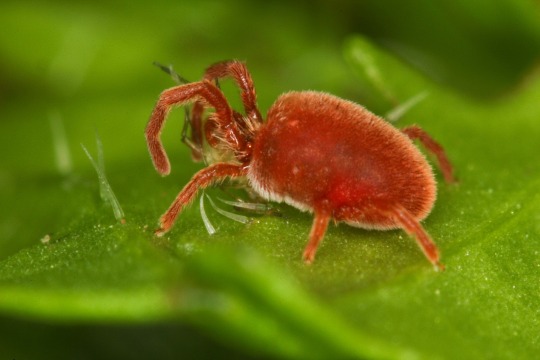
velvet mite (source)
mites are a wildly diverse order, including species that are parasitic, parthenogenetic, and even herbivorous. some species are a diet staple of poison dart frogs, and the source of their toxicity!
amblypygi (tailless whipscorpions)
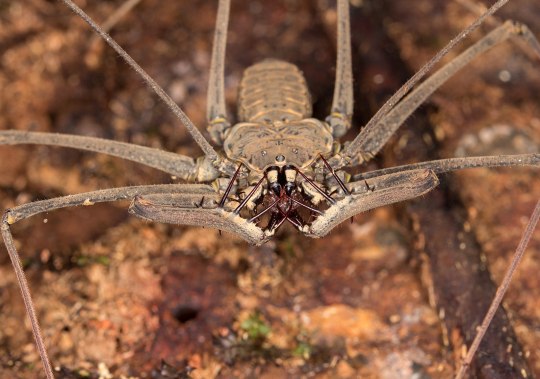
amblypygid in ecuador (source)
the confusingly named yet gentle and charismatic amblypygi are not scorpions, but they ARE extremely cool-looking guys with elongated forelegs used solely as sensory organs, and raptorial pedipalps for grasping prey.
araneae (spiders)
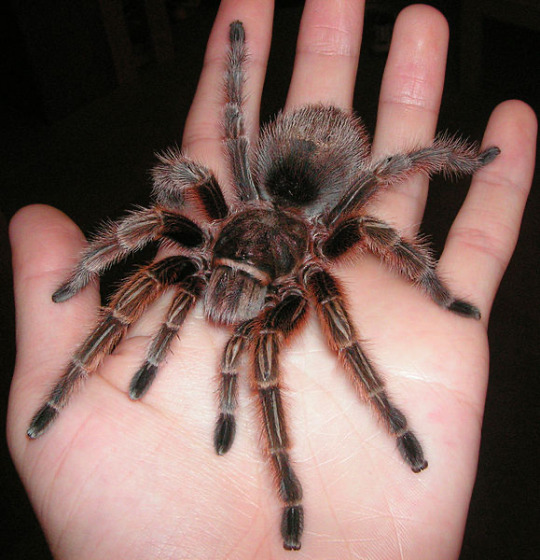
grammostola rosea/rosehair tarantula (source)
arguably the celebrities of the arachnid world, spiders make up nearly half of all known arachnid species. spiders have a pair of spinnerets at the end of the abdomen to extrude silk, which is used in many, many different ways for many different applications. though the vast majority of spiders are predatory and carnivorous, there exists one named herbivorous jumping spider species, the gorgeous little bagheera kiplingi!]
opiliones (harvestmen/daddy long legs)

a male opilio canestrinii cleaning his leg (source)
opiliones are so unique, even within arachnida. they differ from spiders in that the abdomen and cephalothorax are fused, giving them a sort of goofy look. a common misconception about harvestmen is that they are the most venomous “spider” in the world, but their small jaws are too small/too high off the ground to bite humans. the truth is, no known harvestman species posesses venom of any kind, and they have plenty of different defense strategies they’d rather employ before biting. many harvestman species are omnivores and scavengers, feasting upon plants, fungi, and decaying matter.
palpigradi (microwhip scorpions)
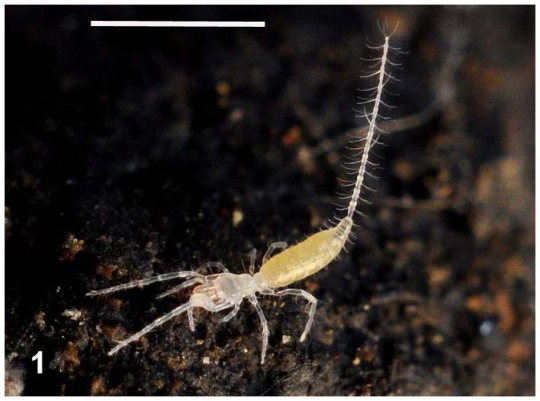
eukoenenia spelaea (source)
not much is known about these diminuitive, moisture-loving arachnids, which are found in tropical and subtropical locations under leaf litter, in damp soil, and in caves far away from light. they’re related to solifugae and never exceed 3mm in length. the species pictured above is known to feed on cyanobacteria.
parisitiformes (ticks and mites)
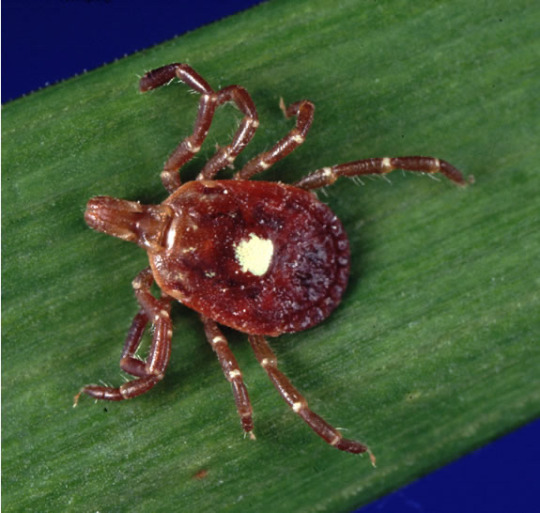
female amblyomma americanum, the famous lone star tick (source)
many parisitiformes are parasitic (such as ticks, which require vertebrate blood to live and reproduce), but not all! this order contains holothyrida, a group of scavenging mites that consume the fluids of dead arthropods and help to decompose them. ticks are deeply important to the ecosystems they inhabit, keeping animal populations in check and preventing overgrazing.
pseudoscorpiones (pseudoscorpions)
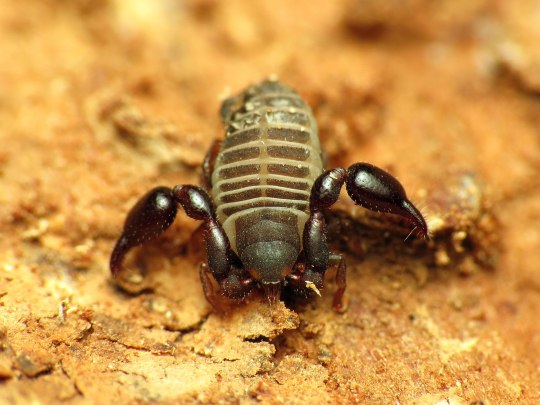
an absolute BABY (source)
pseudoscorpions are tiny arachnids whose pedipalps have evolved into pincers that resemble those of scorpions, although the two orders aren’t that closely related. these little guys utilize phoresis, a type of commensal symbiosis that involves one organism attaching itself to another to travel large distances. pseudoscorpions will often use their pincers to hitch rides on flying insects to get from one place to another! pseudoscorpions are often found in human-inhabited areas preying upon booklice, clothes moth larvae, and carpet beetle larvae (all of which can be destructive to household items).
ricinulei (hooded tickspiders)

cryptocellus goodnighti (source)
ricinulei is a small order of arachnids with just 91 currently described species. they have a “hood” that can be lowered or raised over the head in order to cover and uncover the mouth and chelicerae, and there are zero extant species with eyes. i tried to find a source explaining why the species pictured above has such a delightful name but i was unsuccessful.
schizomida (shorttailed whipscorpion)
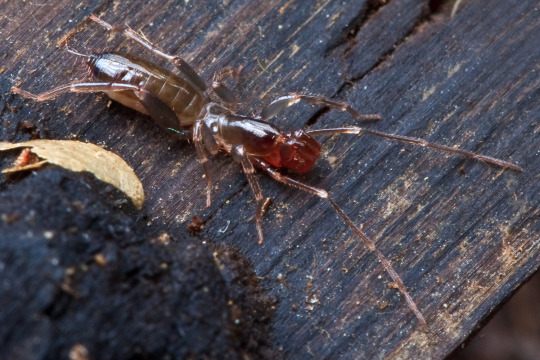
hubbardia pentapeltis (source)
not much is known about this order, but they are closely related to uropygi. these small (~5mm or less) arachnids use their forelegs as sensory organs rather than for ambulation.
scorpiones (scorpions)
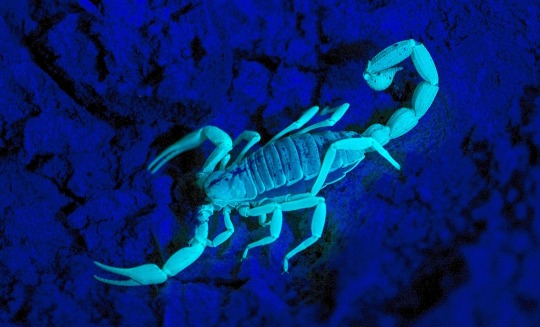
scorpion glowing under UV light (source)
scorpos! scorpions’ pedipalps have evolved into those iconic pincers, and their “tail” (metasoma) ends in a stinger used to subdue prey with venom. all scorpions glow under UV light due to chemicals present in the cuticle. scorpions give live birth, and the mother will carry offspring on her back for a few weeks until their first molt.
solifugae (camel spiders/sun scorpions)
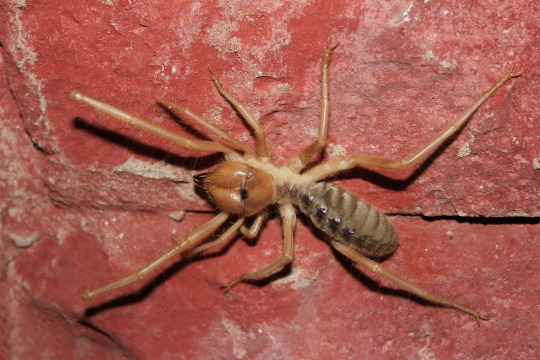
a solifuge in turkey (source)
solifuges are neither true scorpions nor true spiders. they have their own whole deal going on, ok? solifuges are fast-moving arachnids adapted to arid habitats. two of their most unique features are their adhesive pedipalps used to grasp prey, and their powerful jointed chelicerae that can move independently of each other in a sort of grinding motion.
thelyphonida/uropygi (vinegaroons/whipscorpions)
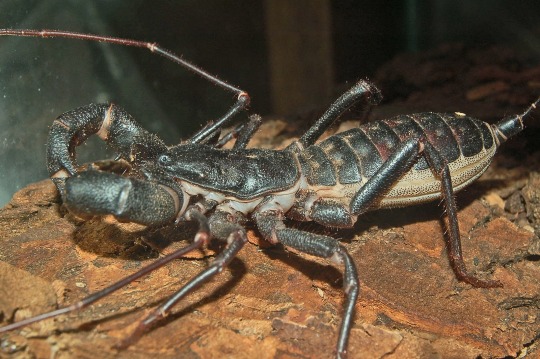
a male pet vinegaroon (source)
depending on who you ask, uropygi also includes schizomida, but i’m going to separate them for simplicity’s sake and continue to refer to vinegaroons as uropygids. anyway- uropygids have a somewhat similar body shape to amblypygids, with more robust chelicerae and a long, whiplike flagellum at the end of the abdomen. one of their common names, vinegaroon, refers to the fact that they have glands on their abdomen capable of expelling acetic acid, a chemical with a vinegary smell, as a defense mechanism. similar to true scorpions, mothers will carry their young on their backs until the first molt (although the mother will not leave her burrow until the young are able to leave her back).
1 note
·
View note
Photo
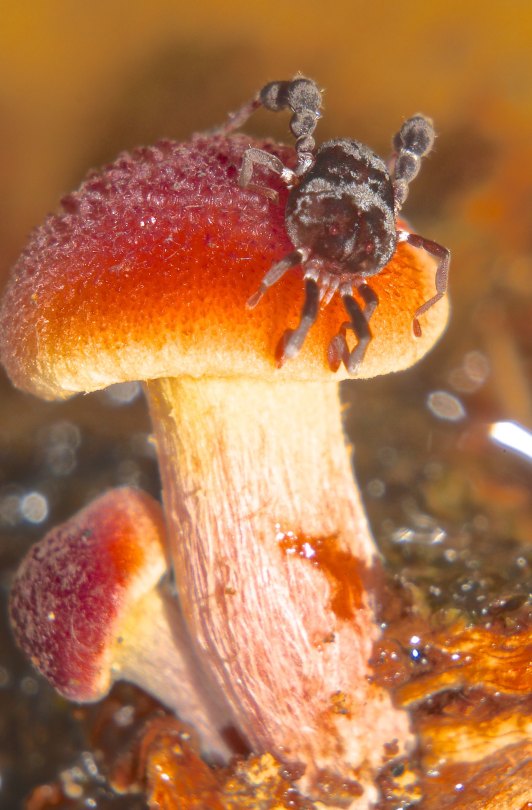
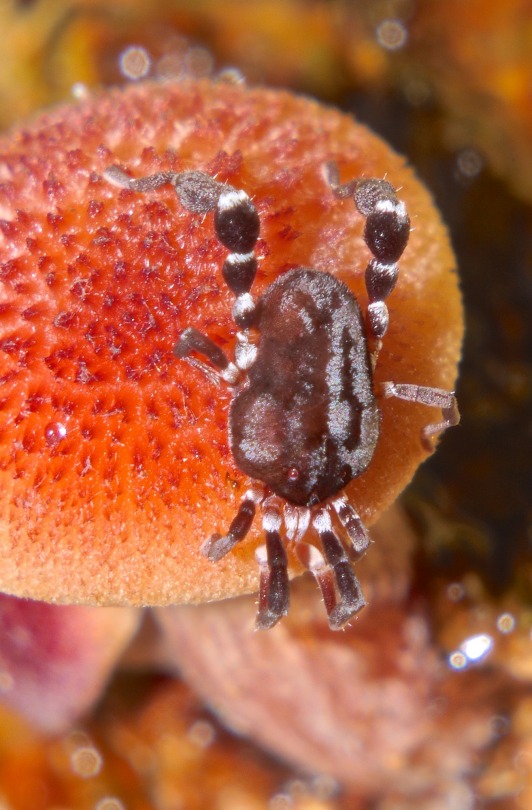
Long-legged velvet mite (Leptus sp.)
Photo by Steve & Alison1
#you have beautiful eyes#fave#unidentifiable#long legged velvet mite#velvet mite#leptus#erythraeidae#erythraeoidea#prostigmata#trombidiformes#acariformes#acari#arachnida#chelicerata#arthropoda#panarthropoda#ecdysozoa
667 notes
·
View notes
Photo

Majority of Anna's hummingbirds may have feather mites on their tail feathers
Hummingbirds are known to host a diversity of feather mites, but this relationship is not well-understood. In particular, mite distribution in situ has not been previously studied. The authors of the present study examined 753 hummingbirds of five species from urban locations in California: Anna's, Allen's, Black-chinned, Calliope and Rufous Hummingbirds. They documented the presence of the feather mite Proctophyllodes huitzilopochtlii on tail flight feathers.
The researchers found that feather mites were present on the tail flight feathers of nearly 60 percent of Anna's hummingbirds, but less than 10 percent of the other species. Across all the species, the mite was more prevalent on the tail feathers of males (44.9 percent) than on those of females (36.2 percent), possibly because of the nesting habits of females.
The authors used tabletop scanning electron microscopy to analyze individual feathers, building a detailed 3D picture of the distribution of live mites in situ. They found that there tended to be more mites on the hummingbirds' outer tail feathers than inner, and saw that mites often nestled between the barbs of individual feathers, sometimes in high numbers.
The authors state that their study provides the first prevalence and distribution information for these feather mites on both Anna's and Black-chinned Hummingbirds. This is especially important given that Anna's Hummingbirds co-reside seasonally with other hummingbird species, with the potential for spread of mites.
#Anna's Hummingbird#Calypte anna#Calypte#Trochilinae#Trochilidae#Caprimulgiformes#Aves#birds#hummingbird#Proctophyllodes huitzilopochtlii#Proctophyllodes#Proctophyllodinae#Proctophyllodidae#Analgoidea#Astigmata#Acariformes#Acari#feather mite#parasitism#mites#California
16 notes
·
View notes
Photo
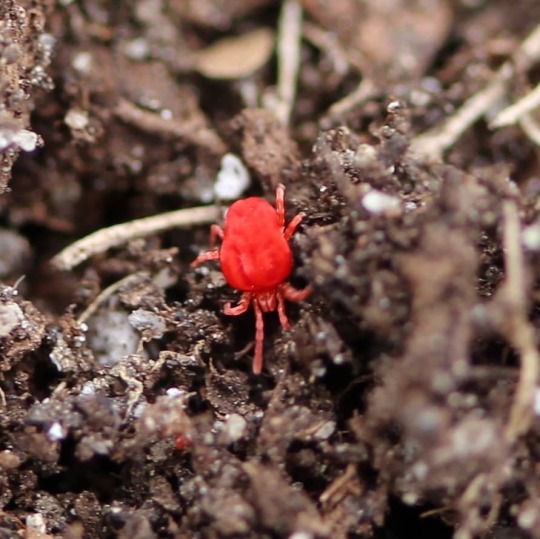
A True Velvet Mite (of the Family Trombidiidae) in our garden, May 2018. Mites and Ticks form a massive subclass of Arachnids (which also includes spiders and scorpions), with about 40 000 different species. Many are impossible to see without a microscope or hand lens, but some velvety red mites can be seen in garden soil because of their bright red coloration and their relatively large size (several millimeters as opposed to smaller than a millimeter). The bright colour is possibly because of pigments that protect them from harmful light. Most Velvet mites are predators of insect or spider eggs and their larvae are parasitic on insects. . . . . . . . #nature #ontario #mites #acari #trombidiidae #gardenwildlife #backyardwildlife #macrophotography #invert_macro #norfolkcounty #norfolkwild #blognorfolk #acariformes #simcoeontario (at Simcoe, Ontario) https://www.instagram.com/p/B_fCvVbAj10/?igshid=106wrgki8r5sz
#nature#ontario#mites#acari#trombidiidae#gardenwildlife#backyardwildlife#macrophotography#invert_macro#norfolkcounty#norfolkwild#blognorfolk#acariformes#simcoeontario
1 note
·
View note
Text
Animal practice 30

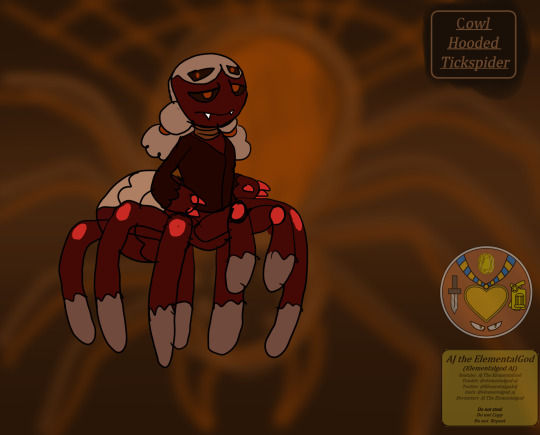
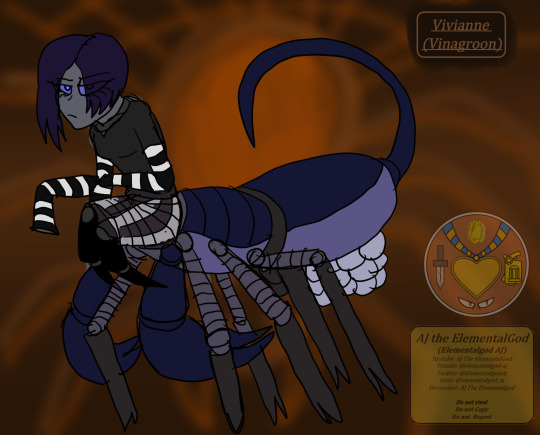

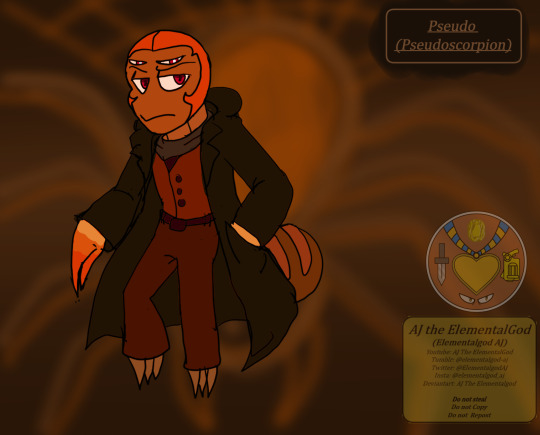
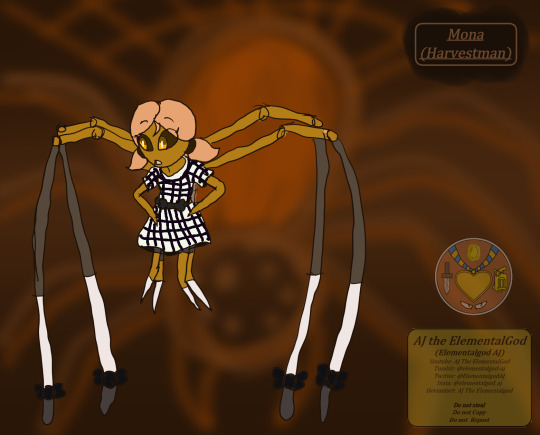
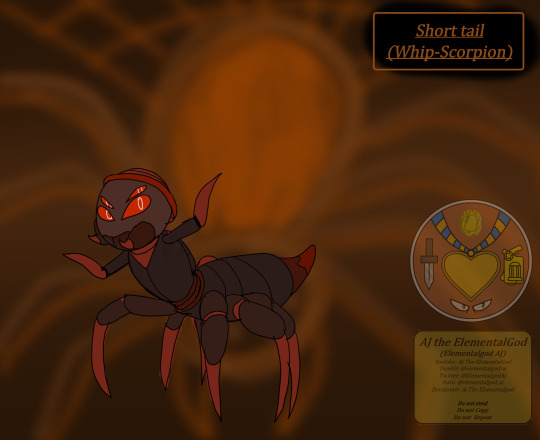


Panarthropoda
Arthropoda 1
Chelicerata/Arachnids 2
Solifugae
Volant (Camel Spider)
Ricinulei
Cowl (Hooded Tick spider)
Thelyphonida
Vivianne (Vinegaroon)
Palpigradi
Micro (Micro WhipScorpion)
Pseudoscorpiones
Pseudo (Pseudoscorpion)
Opiliones
Mona (Harvestman)
Schizomida
Shorttail (Short Tailed WhipScorpion)
Amblypygi
Jorōgumo (Whip Spider)
Acariformes & Parasitiformes
Ick (Mite)
Pox (Tick)whip
#the watchful eye#watchful eye#my art#my oc#my ocs#elementalgod aj#aj the elementalgod#isle 0#toonverse oc#o'kong family#neo demons#earthdemons#anthro allies#panarthropoda#arthropods#arachnid#camel spider#hooded tick spider#whip scorpion#vinegaroon#micro whipscorpion#pseudoscorpion#harvestman#short tailed whipscorpion#whip spider#mite#tick
14 notes
·
View notes
Link
The mite fauna inhabiting nests of various birds in Bulgaria and the world as a whole not yet been insufficient studied. Data of mites of many species of birds, one of which is Ficedula semitorquata are still scarce. The aim of the present paper is to describe the taxonomic diversity and distribution of astigmatic, prostigmatic and mesostigmatic mites in nests of semi-collared flycatcher in North-East Bulgaria. Differences in the species richness and abundance of mites at studied nest-box plots were assessed using Analysis of Variance (ANOVA). Pairwise comparisons were performed using Tukey´s tests. Twelve species, belonging to seven families of mites (Dermanyssidae, Macronyssidae, Laelapidae, Myonyssidae, Macrochelidae, Cheyletidae and Acaridae) were recorded. 157 (83.51%) of investigating 188 nests were infested with mites and the average abundance per nest was 21.24. The distribution of the found species in the nests and nest-box plots is uneven.
5 notes
·
View notes
Text
Cryptic diversity within grass-associated Abacarus species complex (Acariformes: Eriophyidae), with the description of a new species, Abacarus plumiger n. sp.
#pubmed http://dlvr.it/QhsBFM
0 notes
Text
The peritrophic membrane of the mite, Dermatophagoides farinae: Acariformes
http://dlvr.it/PJkPnz
0 notes
Text
Bioekologi Tungau (Mites), Serangga Pengganggu pada Hewan Ternak di Indonesia
Bioekologi Tungau (Mites), Serangga Pengganggu pada Hewan Ternak di Indonesia
Tungau (Mites)
Tungau termasuk ke dalam Ordo Acariformes, merupakan ektoparasit yang kecil (kurang dari 1 mm) dan hampir tidak kasat mata. Kebanyakan tungau hidup bebas di alam (free living) sedangkan yang hidup sebagai ektoparasit hanya beberapa jenis saja. Jenis-jenis yang paling banyak dijumpai di Indonesia antara lain adalah Sarcoptes scabiei penyebab kudis pada manusia dan hewan Psoroptes…
View On WordPress
#basmi kutu#bisnis#hama#kutu#kutu anjing#kutu kasur#kutu kucing#pertanian#pest control#pestisida#tips#tungau
0 notes
Photo

Mange mite (Chorioptes bovis)
Photo by NCVP
#ahahaha how are your 4th legs that small???#saw a photo of this asshole in my parasitology lecture and fell in love#mange mite#mite#chorioptes bovis#chorioptes#psoroptidae#sarcoptoidea#psoroptidia#astigmata#sarcoptiformes#acariformes#acari#arachnida#chelicerata#arthropoda#panarthropoda#ecdysozoa
127 notes
·
View notes
Photo
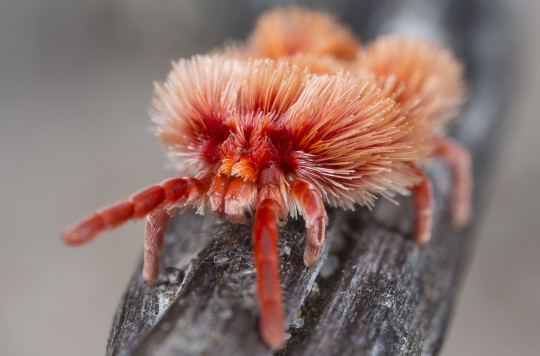

Red velvet mite (Mesothrombium sp.)
Photo by Jurgen Otto
#fave#red velvet mite#velvet mite#mesothrombium#trombidiinae#trombidiidae#trombidioidea#parasitengona#anystina#prostigmata#trombidiformes#acariformes#acari#arachnida#chelicerata#arthropoda#panarthropoda#ecdysozoa#beautiful species
140 notes
·
View notes